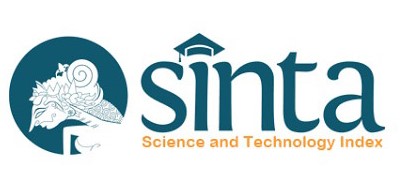Ultrasound-guided Transversus Abdominis Plane Block for Postoperative Analgesia in Patient Undergoing Inguinal Hernia Repair
Abstract
Background: The Transversus Abdominis Plane (TAP) block technique is one method for inhibiting abdominal pain stimuli by blocking afferent nerves in the abdominal wall via the Petit triangle. TAP block action is frequently performed as a postoperative procedure, such as in the case of hernia repair. The goal of using ultrasound in TAP blocks is to distribute the anesthetic agent accurately in the appropriate neurovascular plane.
Case: A 66-year-old male geriatric patient with an incarcerated right inguinal hernia and a history of Hypertensive Heart Disease (HHD) was seen. The patient complained of right groin pain that spread to the right side of the abdomen. Based on the Electrocardiogram (ECG), atrial fibrillation was identified as slow ventricular response and Left Ventricular Hypertrophy (LVH). Chest X-ray revealed cardiomegaly with LVH configuration. ASA III E was assigned to the patient. Regional Anesthesia Subarachnoid Block (RASAB) was used to perform an emergency hernia repair using a regimen of Bupivacaine heavy 0.5% 7.5 mg with adjuvant Fentanyl 50 g. Bilateral TAP block administration using Ropivacaine regimen 0.25% of the total volume of 30 ml was given as postoperative analgesia management. Hemodynamic monitoring, complications and postoperative pain scale were carried out in the High Care Unit (HCU). Hemodynamically stable, pain scale was 1-2 at 24 hours postoperative and no complications.
Conclusion: TAP block is provide an effective and safe anti-pain effect in patients undergoing hernia repair with geriatric comorbidities and a history of HHD, as well as to prevent cardiovascular complications and to speed up postoperative patient mobilization.
Keywords
Full Text:
PDFReferences
Venkatraman R, Abhinaya RJ, Sakthivel A, Sivarajan G. Efficacy of ultrasound-guided transversus abdominis plane block for
postoperative analgesia in patients undergoing inguinal hernia repair. Local Reg Anesth. 2016;9:7-12. doi:10.2147/LRA.S93673
Tsai HC, Yoshida T, Chuang TY, et al. Transversus Abdominis Plane Block: An Updated Review of Anatomy and Techniques.
Biomed Res Int. 2017;2017:8284363. doi:10.1155/2017/8284363
Tran DQ, Bravo D, Leurcharusmee P, Neal JM. Transversus Abdominis Plane Block: A Narrative Review. Anesthesiology.
;131(5):1166-1190. doi:10.1097/ALN.0000000000002842
Journal of Anaesthesia and Pain. 2023.Vol.4(1):18-21
Aguirre-Ospina, OD, Gómez-Salgado JC, Chaverra D, Alzate ,M. TAP block in inguinal hernia repair. Randomized controlled
trial. Rev Colomb Anesthesiol. 2017; 45(3):159-165. doi:10.1016/j.rcae.2017.04.001.
Canakci E, Cihan M, Altinbas A, Cebeci Z, Gultekin A, Tas N. Efficacy of ultrasound-guided Transversus Abdominis Plane (TAP)
block in inguinal hernia surgery and the immunomodulatory effects of proinflammatory cytokines: prospective, randomized,
placebo-controlled study. Braz J Anesthesiol. 2021;71(5):538-544. doi:10.1016/j.bjane.2021.02.005
Özdilek A, Beyoğlu ÇA, Demirdağ Ç, et al. Perioperative Analgesic Effects of Preemptive Ultrasound-Guided Subcostal
Transversus Abdominis Plane Block for Percutaneous Nephrolithotomy: A Prospective, Randomized Trial. J Endourol.
;34(4):434-440. doi:10.1089/end.2019.0766
Mukhtar K,. Transversus Abdominis Plane (TAP) block. The Journal of New York School of Regional Anesthesia.2020;12: 28-33.
Honnannavar KA, Mudakanagoudar MS. Comparison between Conventional and Ultrasound-Guided Supraclavicular Brachial
Plexus Block in Upper Limb Surgeries. Anesth Essays Res. 2017;11(2):467-471. doi:10.4103/aer.AER_43_17
Radiansyah A, Sitepu JF, Bisono L. Combined Axillary Block with Spinal Block Anaesthesia. Solo Journal of Anesthesi, Pain and
Critical Care (SOJA). 2022; 31:2(2):61.
Mavarez AC, Ahmed AA. Transabdominal Plane Block. [Updated 2022 Oct 3]. In: StatPearls [Internet]. Treasure Island (FL):
StatPearls Publishing; 2022 Jan-. Available from: https://www.ncbi.nlm.nih.gov/books/NBK560527/
Abrahams M, Derby R, Horn JL. Update on ultrasound for truncal blocks: A review of the evidence. Reg Anesth Pain Med.
;41(2):275–88.
Liu R, Qin H, Wang M, Li K, Zhao G. Transversus abdominis plane block with general anesthesia blunts the perioperative stress
response in patients undergoing radical gastrectomy. BMC Anesthesiol. 2019;19(1):205. doi:10.1186/s12871-019-0861-0
Mallan D, Sharan S, Saxena S, Singh TK, Faisal. Anesthetic techniques: Focus on transversus abdominis plane (TAP) blocks.
Local Reg Anesth. 2019;12:81–8.
Karasu D, Yilmaz C, Ozgunay SE, Yalcin D, Ozkaya G. Ultrasound-guided transversus abdominis plane block for postoperative
analgesia in laparoscopic cholecystectomy: A retrospective study. North Clin Istanb. 2020;8(1):88-94.
doi:10.14744/nci.2020.84665
Rahimzadeh P, Faiz SHR, Latifi-Naibin K, Alimian M. A Comparison of effect of preemptive versus postoperative use of
ultrasound-guided bilateral transversus abdominis plane (TAP) block on pain relief after laparoscopic cholecystectomy. Sci
Rep. 2022: 1;12(1).
DOI: http://dx.doi.org/10.21776/10.21776/ub.jap.2023.004.01.05
Refbacks
- There are currently no refbacks.

This work is licensed under a Creative Commons Attribution 4.0 International License.









.png)

